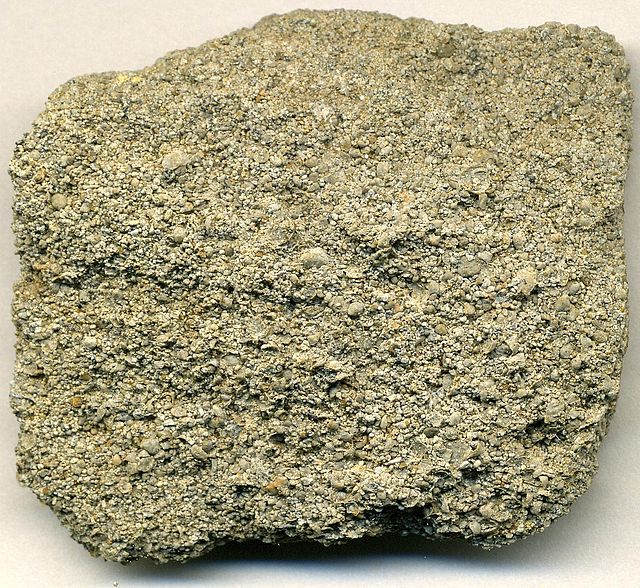Phosphate mining in the United States
In 2015, 27.6 million metric tons of marketable phosphate rock, or phosphorite, was mined in the United States, making the US the world's third-largest producer, after China and Morocco. The phosphate mining industry employed 2,200 people. The value of phosphate rock mined was US$2.2 billion.
Phosphate mine near Flaming Gorge, Utah, 2008
Large pile of phosphogypsum waste near Fort Meade, Florida.
Phosphorite, phosphate rock or rock phosphate is a non-detrital sedimentary rock that contains high amounts of phosphate minerals. The phosphate content of phosphorite (or grade of phosphate rock) varies greatly, from 4% to 20% phosphorus pentoxide (P2O5). Marketed phosphate rock is enriched ("beneficiated") to at least 28%, often more than 30% P2O5. This occurs through washing, screening, de-liming, magnetic separation or flotation. By comparison, the average phosphorus content of sedimentary rocks is less than 0.2%.
Peloidal phosphorite, Phosphoria Formation, Simplot Mine, Idaho. 4.6 cm wide.
Fossiliferous peloidal phosphorite, (4.7 cm across), Yunnan Province, China.
Guano phosphorite mining in the Chincha Islands of Peru, c. 1860
Phosphorite mine near Oron, Negev, Israel.






